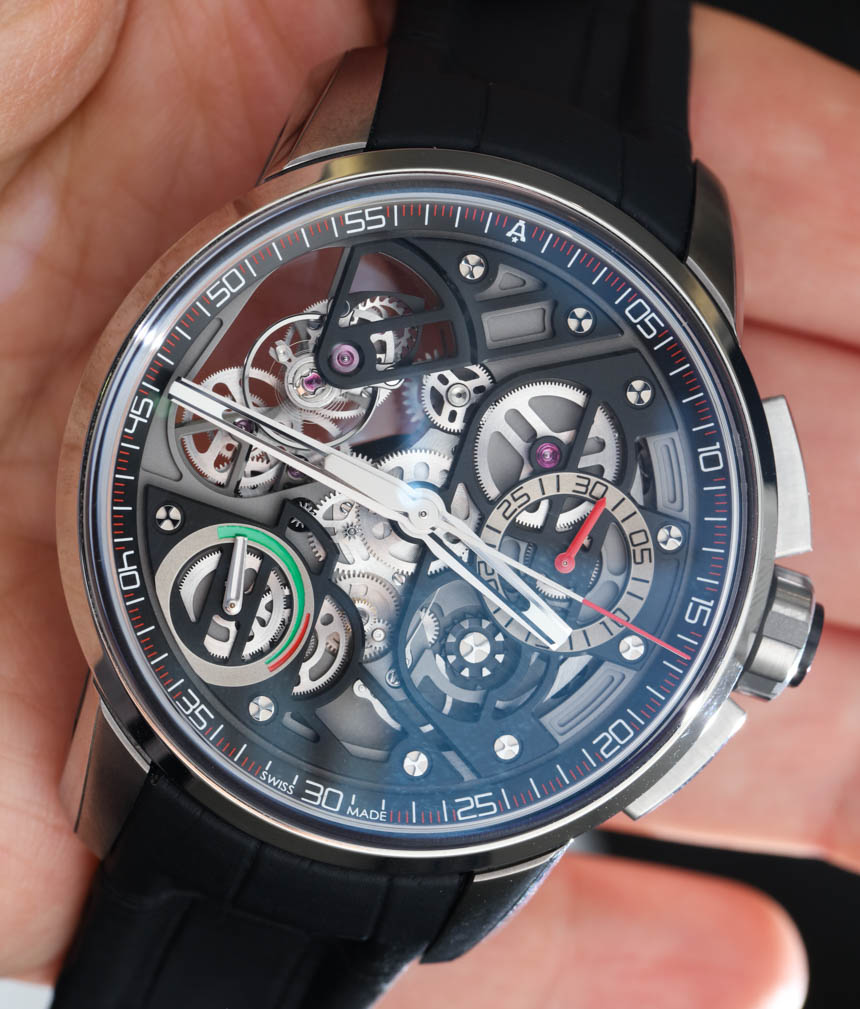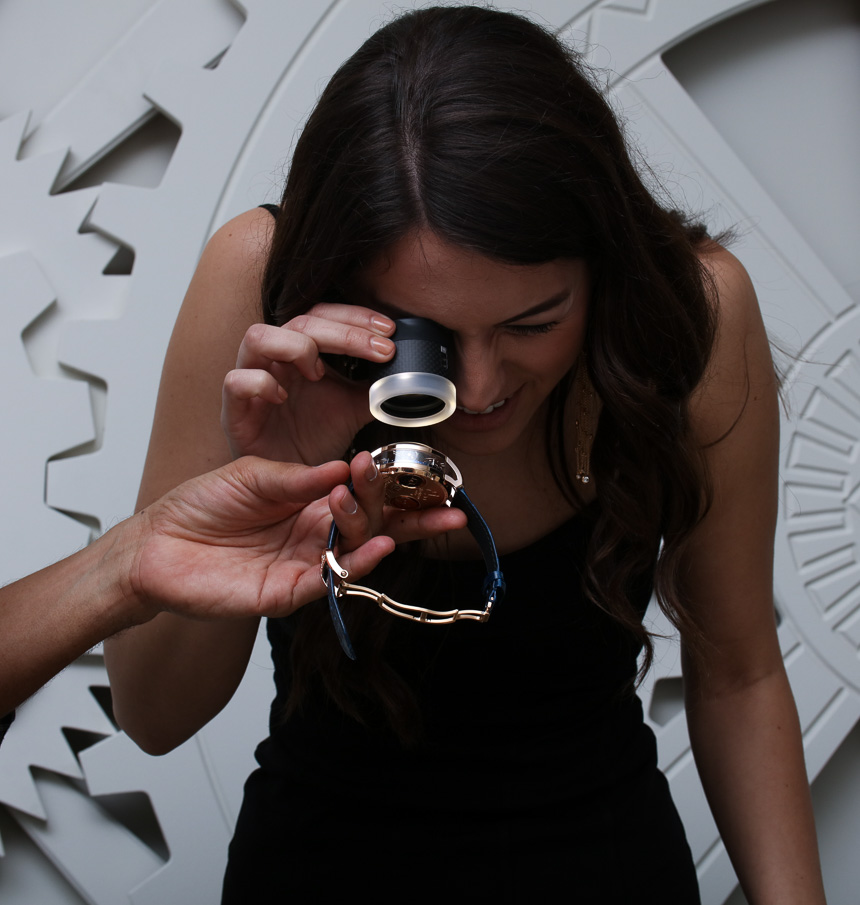To summarize and recap the Baselworld 2016 watch trade show event, we are going to do something a bit different this year by having not one but two “top 10” lists. Normally, the aBlogtoWatch editorial team discusses the best watches of the show and summarizes them by listing 10 top models (not ranked) which we feel are the Baselworld highlights of that year. In 2016, we observed – more so than ever – a distinct split in the new watch product strategies when meeting with the several dozen brands we were able to meet with during our eight days at the show. Those two strategies could be defined as, first, coming out with a totally new watch model or collection, and second, as refining or meaningfully expanding on an existing model or collection. For that reason, our Baselworld 2016 recap coverage will be first as a list of the top 10 totally new watches as presented in this article, and a second article dedicated to the top 10 updates to existing watch products and collections.
Moreover, I will use the preamble of this article to speak generally about my perception of the watch industry business as it is at the end of the first quarter in 2016, and in the second article I’ll spend more time talking about various trends and themes the aBlogtoWatch team observed when looking at new watches. Overall, 2016 wasn’t a bad year product-wise, with lots of new and diverse watches meant for a wide cross-section of the market. With that said, underlying weaknesses in the industry itself are announcing themselves more loudly than ever which is having a huge impact on the industry being able to monetize its best ideas.
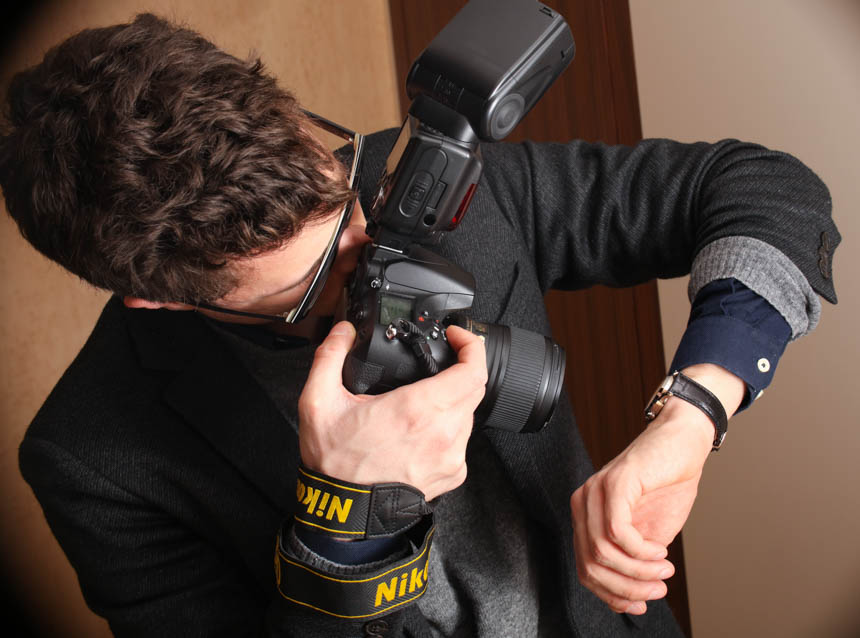
Over the last year, I’ve attempted to dedicate a lot of my writing to analyzing deep systemic issues in how the watch industry is run. Never forget that the watch industry is literally hundreds of years old, and themes and business models persist long after they may be obsolete when compared to the business strategies of other industries. In many ways, the watch industry, especially the luxury part of it, exists in a sort of self-contained bubble that attempts to be insulated from how the rest of the world operates. Luxury, after all, is in imbuing purchases with a degree of fantasy, and the high-end horological items we love satisfy us emotionally versus practically. That means that in a lot of ways the high-end watch industry is more like the art market than, say, the fashion market – even though so much of how the watch industry operates still treats many timepieces like commodities.
I say all this as a segue to return once again to an important theme I keep trying to emphasize, which is: despite problems with companies selling watches to the market, the market has an enormous appetite for watches. Notice the two points I bring up; first is that the watch industry has problems selling watches through to the end-customer (as opposed to a dealer as the customer), and second is that the market (the consumers) has a large appetite for watches. At first glance, these two concepts seem to be at odds with one another, but they are not.
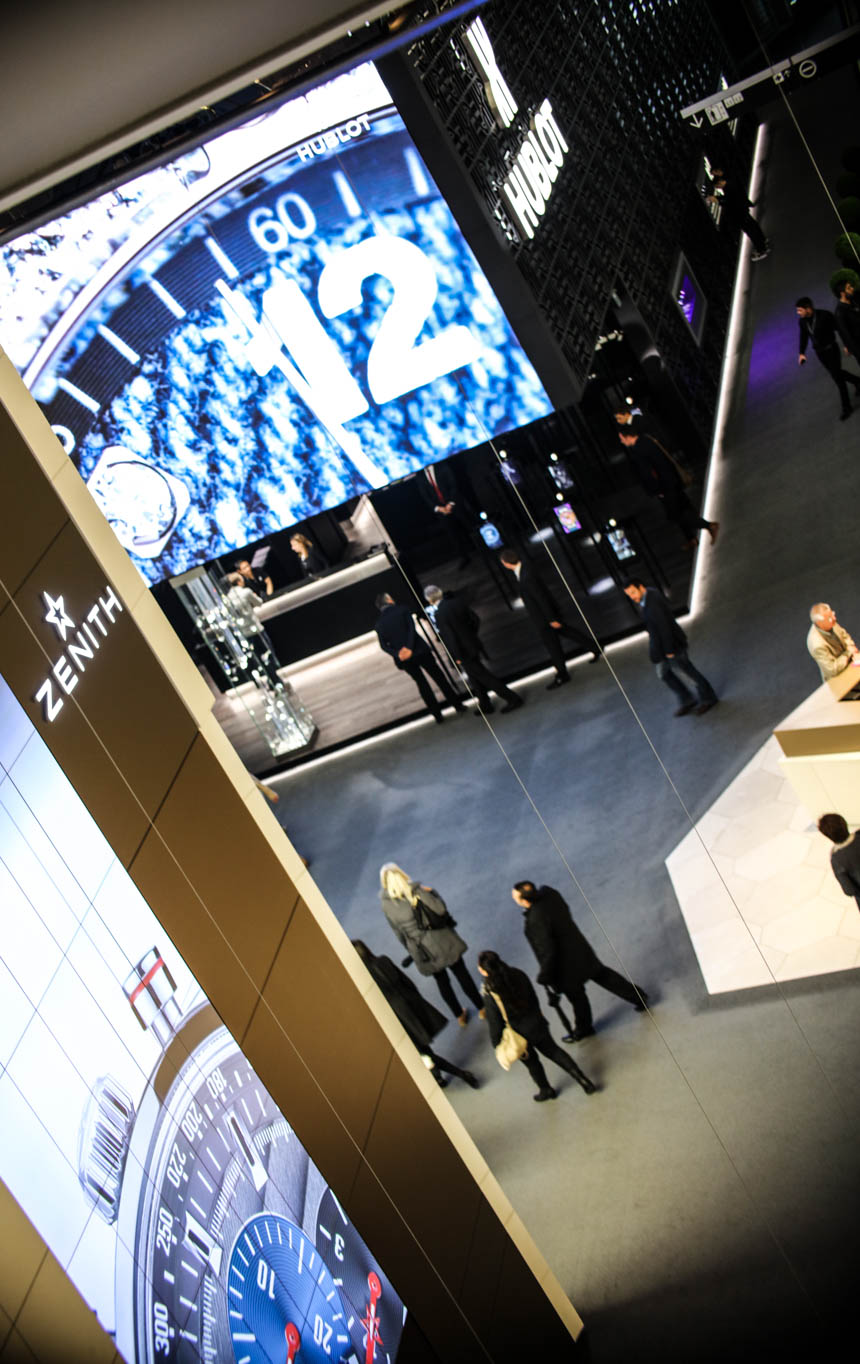
How can a market with high demand for watches not succeed at selling watches? Watch brand marketing, media efforts, and invigorated product design over the last few years have succeeded in helping high-end watches reach more people and create more demand than ever. If anything, there has never been a better time to be in the business of writing about watches because of the wonderful diversity of truly kick-ass stuff. With that said, the watch industry has been slow to adopt to the increased needs of a global market which removes regional borders and is highly price-sensitive, while at the same time modernizing distribution and sales methods. So basically, people want watches, but the road to getting them is currently murky and confusing for all parties involved.
As a small testament to this odd dichotomy, aBlogtoWatch reached record traffic numbers in just the first two days of the Baselworld 2016 show, demonstrating just how large people’s appetite for watches currently is. At the same time, Baselworld 2016 had a reported 30% reduction in attendance, which means that a large number of watch brands, retailers, and distribution agents from around the world did not attend the extremely important trade show event.

It is difficult to explain the current situation in simple terms because like any economy, it takes some detective work to unravel the core causes and effects of a variety of factors which add to market strength or weakness. My instinct, however, is that the established wholesale model of watch brands selling into a market and then relying on retailer and distribution partners to then sell those goods to the end-consumer is increasingly showing its age and further cracking around the edges. Another example to personify this issue is an examination of new product launches. Baselworld is, at heart, a sales event where buyers from around the world meet with brands to put in orders for new watches that will eventually be delivered to them and sold to the end consumer. What happens, then, if a watch brand only releases a small number of new products?
Fewer product releases can be very helpful in reducing a company’s SKU bloating, and help reduce overall inventory in the market. When there are too many unsold watches out there, it doesn’t make a lot of sense to keep adding more product into the market. The result of that is more gray market activity and price reductions because the balance of supply and demand becomes shifted in the direction of too much supply. On the other hand, less product into the market means fewer sales into the market itself. Brands have fewer products to sell, attempt to keep pushing existing products, and brands earn less because there is less to sell into the wholesale market. Thus, fewer product releases might be good for a brand in the long run because it helps “clean up the market,” but it causes a lot of short-term problems.
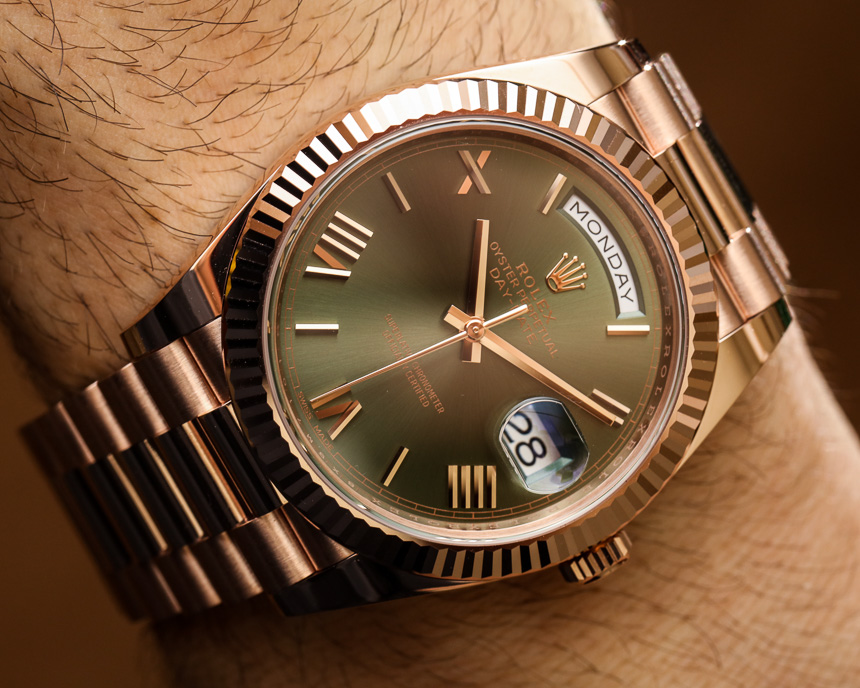
Not all brands, however, are part of the “less product” bandwagon. Many brands are actually taking a totally different approach by “relaunching” with a new face, new products, and often a totally new product strategy. It can be said that brands like Tudor and Omega are taking a highly conservative approach to new product launches in 2016, while brands like Tissot, Rado, and Gucci are doing just the opposite by continually trying to reinvent their images and offering loads of new products. In any event, both categories of brands agree that the status quo of selling watches is not working for them.
I’ve suggested (and directly advised) that watch makers work on selling directly to consumers as much as possible in the future. The traditional distribution model which includes third-party retailers and a range of middle-men between the brand and final consumer must eventually go. Some brands like Rolex who ardently control the market can hang on longer, but at the end of the day, the future of the watch industry is in removing the wall between brand and consumer, and connecting the two more directly. This will have the effect of reducing problems of excessive inventory in the market, as well as helping to stabilize prices. By selling direct to consumers (through various means), watch brands can lower prices and sustain for much longer.

I am cautious not to wholesale dismiss the many wonderful people and stores around the world who as third-party retailers sell many of the watches that consumers buy. Am I really advocating the third-party retailers go away entirely? No, that would be foolish. It takes both passion and specialization to sell watches, and most corporate entities who are in the business of producing watches are not currently set up to sell watches. I think that a limited, but important part of the watch industry will always be effective specialist retailers around the world who employ educated sales people to sell complex and exotic watches to discriminating aficionados. There are, however, a limited number of these stores around the world, and despite their importance, they cannot carry the industry alone.
Thus, the future, for me, is one where third-party watch retailers offer showrooms and specialist destinations for some consumers in major cities to purchase luxury watches, and exist alongside (as a different channel) a watch brand’s direct efforts to sell watches to consumers via brand boutiques and, of course, via online distribution. As long as watch media like aBlogtoWatch (and others) are able to bring hands-on, opinionated editorial content to consumers, there will always be a strong demand for watches from consumers without them having to see the products first.

It is not enough for a watch brand to technically offer online sales as means of accomplishing the above goal. Offering websites with online sales direct from a brand is just one pieces of a larger strategy. Selling online is about having a smooth transaction, without huge price variances among competing retailers, and also heavily investing in marketing to drive consumer traffic. There are, for instance, a range of watch brands today that do offer online sales, but in a crowded market where their website offers the most expensive price available. Will a consumer shop directly from a brand online if that price is as high or more (in some instances, 30-40% more) than gray market prices? No. The consumer is going to determine that the products are the same and that the “street price” is 30% less than the retail price. This happened in the electronics industry over a decade ago and required that the industry clean up online distribution in a similar way that the watch industry needs to now.
I’ll leave the conversation about marketing to future articles, as you know I have plenty of things to say about that. This entire subject of watch industry sales and distribution reform is extremely salient to Baselworld 2016 coverage because each of these topics were regular themes we encountered in our discussions with the participating watch brands, be they a small independent company or a major watch brand.
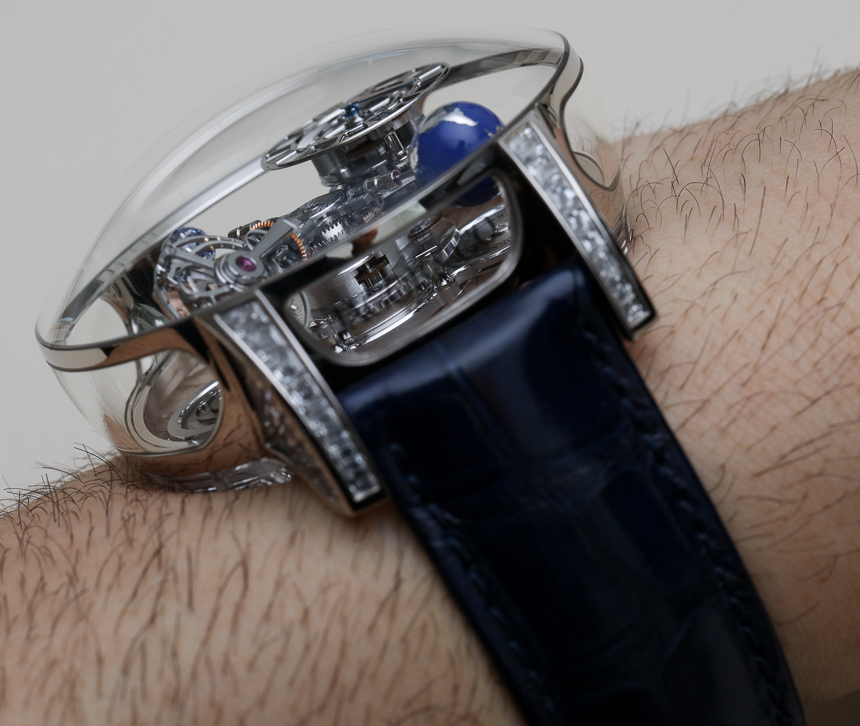
So what themes can we glean from the below top 10 totally new watches from Baselworld 2016? You’ll see a range of prices from under $1,000 to over $100,000. I am happy to report that interesting new watches exist at all price levels. We also continue to see playfulness and risk-taking in exotic themes which are more mechanical art than they are practical or utilitarian. With that said, even some of the most exotic and complicated watches on the list are easily wearable for daily use, and in some instances, downright subdued.
We also see fluid executions of specific goals in the best watches. None of the timepieces below are merely design-oriented with no technical justification. We place little value on form-over-function, instead celebrating those watches which look cool because they do something cool. In the past, we’ve seen too many timepieces with evocative designs, only to let us down a bit because at their core they don’t do anything special. A good example is the Ulysse Nardin Grand Deck Tourbillon that wows us because of its unique movement and complication, not because of the elaborately detailed dial. Further, we love the Bulgari Octo Finissimo Minute Repeater because of its clear goal of offering a beautiful, thin, and loud-sounding minute repeater as opposed to putting an existing movement in a decorative case and dial.
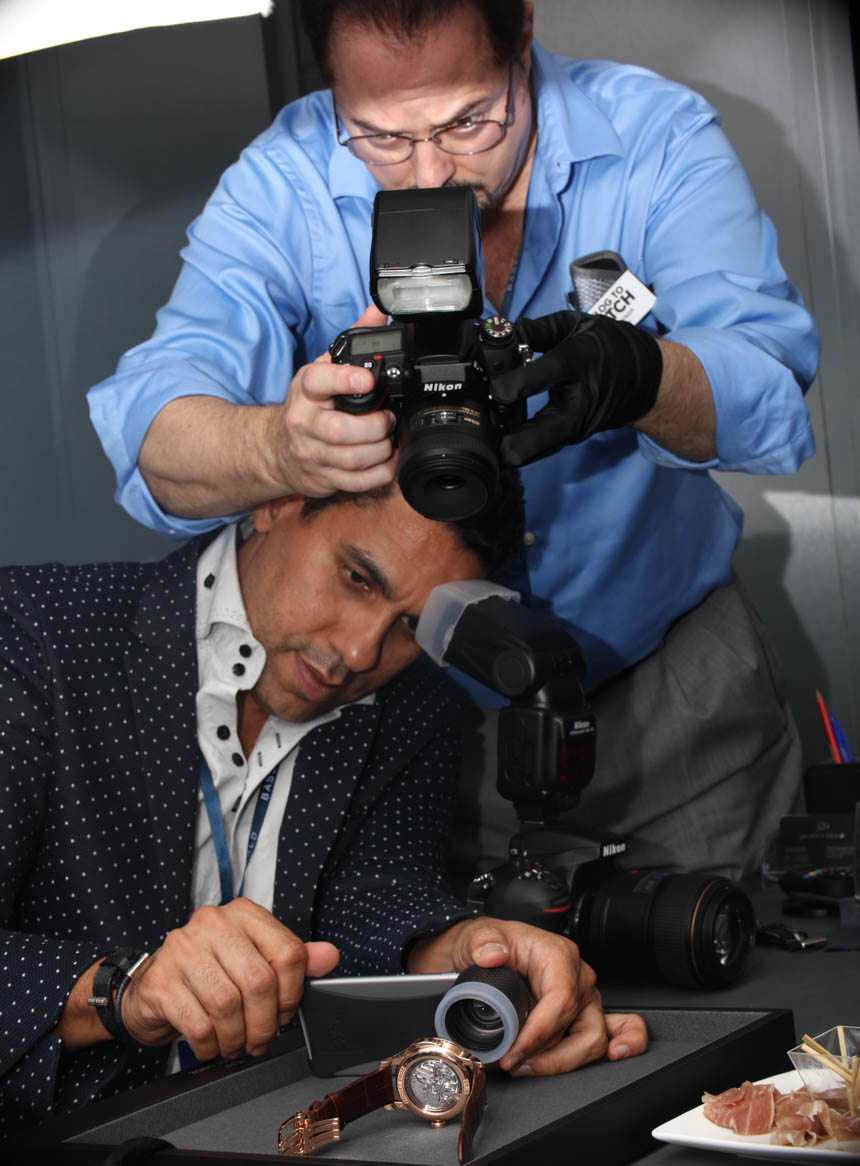
For 2016 more than ever, we are also trying to celebrate value and beauty. If we hear anything from consumers it is that they want good-looking watches that they feel are worth the money. About half the watches on this list are under $10,000, and the higher-end models still offer good value for the money – competitively speaking. Watch makers should never (ever) underestimate a consumer’s inability to forgive aesthetic (which includes legibility) issues as a bar to making a purchase decision. Absolute refinement is often necessary for a consumer to put down the money for a luxury item. An otherwise fantastic watch with potentially small issue like illegible hands, overly reflective crystal, sharp-edged case, or unattractive textures on a dial can immediately stop a consumer from buying. Why? Well, frankly, there are so many watch options out there, consumers who inevitably have limited budgets look for reasons to say “no” to purchases rather than looking to say “yes” more often. The road to getting a luxury watch on a consumer’s wrist is achieving a degree of perfection in the mind of that consumer. Why else would someone spend luxury money on a timepiece? I’ll leave that as a final thought and proceed to our aBlogtoWatch editor’s list of the top 10 totally new watches of Baselworld 2016:

